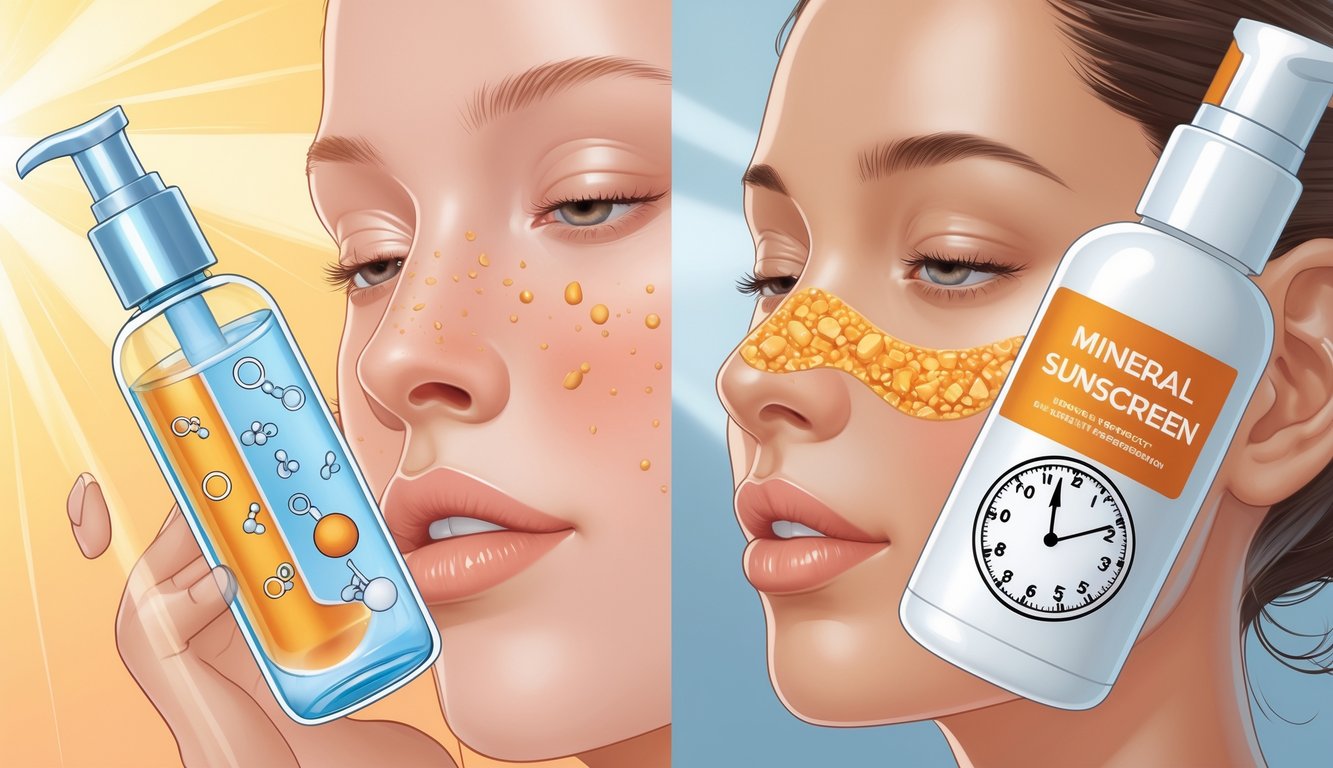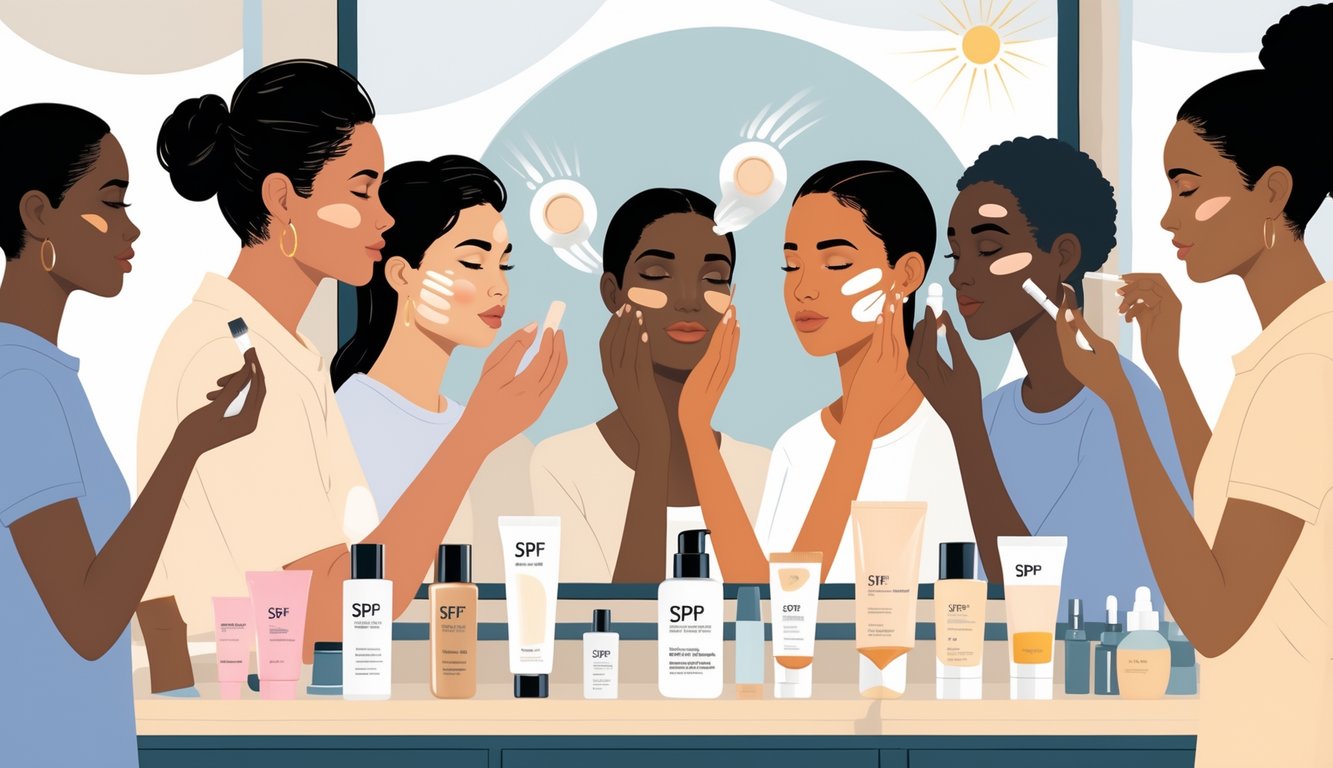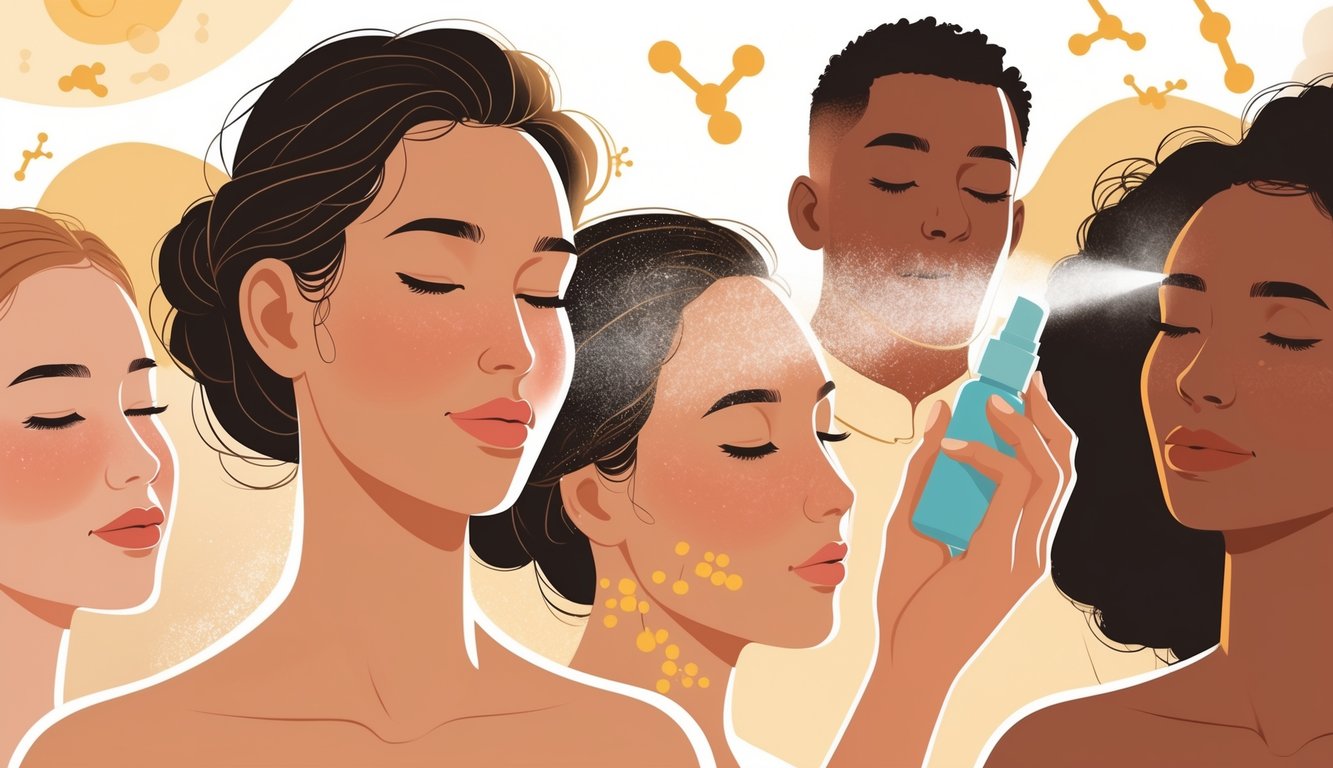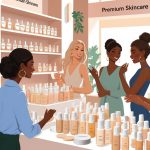Little-Known SPF Mistakes Quietly Raising Your Risk This Week
Product Choice: Chemical vs. Mineral Sunscreens

Everything says “safe” or “clean” these days, but picking a sunscreen? It’s a mess. One glance at the label and I’m stuck with something I’ll hate. Some formulas sting my eyes, others just make me want to wash my face immediately. And the ingredients—oxybenzone, titanium dioxide, those weird nano-things—matter more than anyone at the store admits.
Reading Sunscreen Ingredient Labels
Some dermatologist once told me, “If you see avobenzone or octocrylene first, it’s a chemical sunscreen. Absorbs rays, might bug your skin.” The mineral/physical ones use zinc oxide or titanium dioxide—supposedly gentler. EWG won’t shut up about mineral formulas, especially if you’re sensitive or worried about hormone stuff.
But honestly, reading those labels is a nightmare. “Broad-spectrum” in giant letters, but the actual ingredients are microscopic. Half the “natural” ones sneak in random synthetics. I bought five “reef safe” tubes once—none rubbed in clear, only one didn’t make me look like a ghost. No handy chart, no consensus, no way to know which one will break me out until it’s too late.
Oxybenzone, Titanium Dioxide, and Nanoparticles
Remember when everyone freaked out about oxybenzone? EWG went on a tear and suddenly it was the sunscreen villain, especially in sprays. FDA’s reviews are so noncommittal it’s like they’re afraid to pick a side. Titanium dioxide sounds chill until you realize some brands grind it down to nanoparticle size so it’s invisible—great for not looking like a clown, but then my friend panicked about “inhaling nanostuff.”
Here’s what’s wild: Cleveland Clinic says there’s barely any proof these particles get through healthy skin, but parent groups still worry. EWG keeps pushing mineral for kids. Personally, titanium dioxide stings less than zinc, but every chart says zinc blocks UVA and UVB best. So, do you pick the maybe-endocrine disrupter, or the maybe-inhalable nano-particles? No clue. Marketing sure acts like there’s a perfect answer.
Misconceptions About Foundation and SPF

Foundation with SPF? I wish it worked. I used to believe a tinted moisturizer with “SPF 15” would save me. It didn’t. Plenty of people still trust a dab of makeup to do the job—why, though?
Limitations of Makeup with SPF
People see “SPF 20” on a foundation bottle and think they’re covered. Dermatologists just sigh. Mine flat-out told me, “You’re not putting on nearly enough to get that protection.” She’s right. CC cream, BB cream, whatever—nobody’s slathering on a clown-thick layer. You’d need to, for real coverage.
Marie Claire’s beauty editors keep saying it: makeup SPF is a weak shield, especially if you’re sweating, touching your face, or just, you know, being a human. UV rays don’t care what you’re wearing unless you’ve got a proper broad-spectrum sunscreen under your makeup. The only thing more stubborn than sunscreen myths is believing your five-minute routine is enough.
I once mixed my sunscreen with foundation (don’t ask, it was a Monday), and it looked weird, didn’t help, and I still got pink. If someone ever invents a truly protective, flawless-finish SPF foundation, I’ll be first in line.
SPF, Hormones, and Skin Health

I’m out here trying to keep my skin from turning into leather, but half the time I’m convinced my sunscreen’s messing with my hormones or making me look older anyway. There’s too much to read, too many acronyms, and I’m not squinting at ingredient lists with a magnifying glass.
Hormonal Changes and Sun Sensitivity
I slap on whatever SPF bottle isn’t crusty, but apparently, some chemical sunscreens—oxybenzone, homosalate, whatever—might mess with estrogen and androgen. My dermatologist says, “Just use zinc oxide if you’re worried.” I try, but honestly, I forget which tube is which.
Here’s something nobody warns you about: your skin gets more sensitive during parts of your cycle or if you’re pregnant. There’s no blinking sign saying “Caution: extra burnable today.” Dr. Sohere Roked mentioned chemical SPFs might mess with hormones, and I laughed… until I saw studies showing these ingredients in blood samples after one use (PBL Magazine). Sunscreen’s supposed to help. Now I’m just confused.
Free Radicals and Skin Aging
I’m always late and forget half my routine, but here’s the thing—SPF blocks sunburn, but it doesn’t always stop UVA or all the free radicals that age your skin. Friends with derm degrees keep telling me, “You need antioxidants.” One literally threw a vitamin C serum at me. I dropped it. Free radicals don’t care if you followed every step—they just show up and wreck your collagen anyway. Wrinkles aren’t just from smiling, apparently.
Dr. G. Anthony Slagel at Piedmont Healthcare says zinc oxide and titanium dioxide are best, but nobody told me labels would look like a chemistry quiz. Even weirder, some chemical SPFs break down in sunlight and make more free radicals unless stabilized. Not even sunny? Still possible damage. Why don’t more brands add antioxidants to sunscreen? My friend Anna’s SPF had green tea in it. She swears it keeps her skin smooth, but I’m not convinced. Maybe I’m just paranoid, but next time I’ll actually read the label.



